iPhone Through the ages: How much has it changed?
27 August 2014
It’s almost hard to believe there was ever a time before the Apple iPhone existed. There was however and this time was everything prior to June 2007.
Since its launch, the iPhone has become a popular gadget in many households, and has become a life accessory rather than just a phone. The iPhone that we know and love today however isn’t how it all started out. The iPhone series has evolved over the last 8 years with a total of different 8 models being released and another due in just a matter of weeks. Below we take a look at the journey of the iPhone from the original to the much anticipated iPhone 6.
iPhone (first generation)
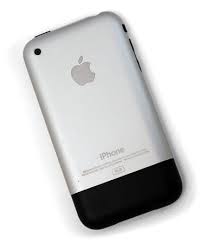
June 2007 “changed everything”, according to Apple. The revolutionary iPhone launched, and it was beautiful. The first generation iPhone was a revolutionary device and equipped with a multi-touch screen and only four physical buttons on the handset. Available in 4 GB or 8 GB, both models came with Wi-Fi, 128 MB of RAM and a 413mhz processor. The iPhone was a new concept, in that this device was an iPod, web browser and telephone all in one attractive little package. It was simple however compared to the iPhone of today. The headphone jack was recessed and the 2mpx camera was simple to say the least, in fact, it didn’t even support video. There was also no ability to send multimedia messages such as photos or audio. Regardless of this, it was still a giant step in the right direction and people started to view their mobile as more than just a telephone device but instead as an everyday accessory.
iPhone 3G
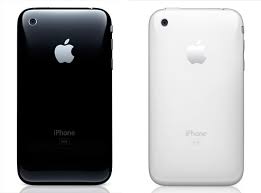
The First generation iPhone had left some things to be desired, but fans didn’t have long to wait for the next installment and just under a year later, the next iPhone was released, the iPhone 3G. The design had changed, with a 100% plastic body being preferred over the aluminum casing of the original model. It was also available in black or white, and the headphone jack was now flush within the casing too. As it's title clearly gave away, the biggest change was the introduction of 3G connection, and faster mobile internet. The upgrades stopped there however, and battery life was even a little worse than the predecessor.
iPhone 3 GS
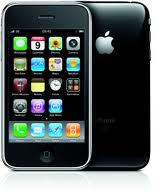
Apple had come under fire for the increase in price of the iPhone 3G compared to the first generation iPhone and changes needed to be made. Apple responded to the noise by introducing the iPhone 3GS, an iPhone that boasted changes and improvements that actually counted. The display was the same 3.5inch 320 x 480 screen and its appearance was pretty much unchanged. Performance however, had increased dramatically, with double the processing speed and double the RAM. The new device offered a better 3.2mpx camera that could now record videos as well as take photos. Other bonuses included a digital compass, voice control and the introduction of the 32 GB option.
iPhone 4
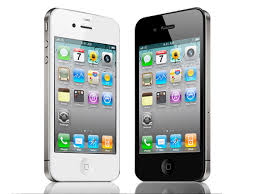
With the release of the iPhone 4, Apple promised to 'change everything' once again, and true to their word, they did. The new design was simply beautiful, with toughened glass on the front and back and an aluminum rim that acted as an antenna. RAM was up to 512mb, and the processor clocked in at a cool 1ghz. The camera had been improved dramatically and boasted 5mpx with the ability to record HD videos. Best of all, was the Retina Display – with a resolution so high that it was impossible for the human eye to discern individual pixels. However, not everything had improved, and problems with reception and call-dropping were well-publicised, forcing Apple to give away free rubber insulators to prevent the problem.
iPhone 4S
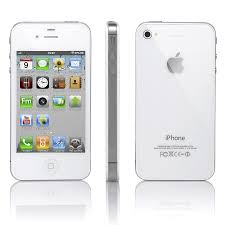
Apple was fast learning that when it comes to smart phones, it’s what’s inside that counts. The design of the iPhone 4S therefore remained pretty much unchanged, but the internal specifications and hardware had been given an impressive makeover. The iPhone 4S also came equipped with i0S5, the most advanced operating system at the time. With this came a whole host of new features, including Siri, an intelligent virtual assistant and iCloud. The iPhone 4S was also noticeably faster than its predecessor thanks to the addition of the A5 chip. The camera was once again improved, this time from a 5 mpx to 8mpx allowing Apple to keep up with the competition which had dramatically advanced by this time.
iPhone 5
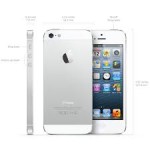
On 12th September 2012, Apple delivered yet another device, the iPhone 5, this time with an external makeover. The screen was a little larger, 4 inch to be precise and this new iPhone was taller and thinner, making it feel better and sit better in your pocket. The 4 inch screen boasted an 1136 x640 pixels display and the new A6 processor meant that the speed of the iPhone 5 was significantly increased compared to the iPhone 4S. The iPhone 5 was available in 16GB, 32 GB and 64 GB and the glass back had been replaced with sleek aluminum available in black and slate or white and silver. Never one to neglect the front camera, Apple had given it its biggest upgrade yet, but there was no change to the rear camera.
iPhone 5S
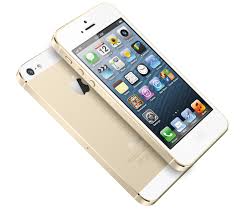
By September 2013, Apple had won themselves a host of loyal fans and the launch of the new iPhone was highly anticipated by many. There was little room for dramatic improvements at this stage, but Apple did have a couple of surprises in store. The first was the announcement that there would be not only one new iPhone, but two. The iPhone 5S was a brand new flagship phone, complete with built in finger print scanner, allowing you to unlock your iPhone with one swipe. The iPhone 5S was also available in gold for the first time ever, as well as space grey and silver. This new iPhone boasted Apple’s the new A7 chip and M7 Coprocessor, resulting in a faster iPhone with an increased battery life, something that had been heavily demanded among Apple fans. The new iPhone 5S also had motion sensing technology, a HD front camera and slow motion video function, giving Apple loyalists plenty of reason to upgrade.
iPhone 5C
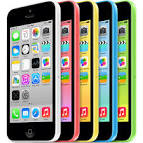
In addition to the iPhone 5S, the iPhone 5C was released in a bid to win over more price sensitive consumers, something that was criticised considering the model cost only £100 less than it’s impressive big sibling, the iPhone 5S. Unlike the sheik Aluminum iPhone 5S, the 5C came with a cheaper looking plastic back and offered a refreshing splash of colour, available in 5 bright colours including pink and green. The iPhone 5C was equipped with the A6 chip, 8MP iSight camera, 4-inch Retina display and Ultra-fast wireless. In terms of specifications it was similar to the previous iPhone 5, but with a few changes including the new iOS7 operating system. The similarities to the iPhone 5 were no coincidence however and will the introduction of the iPhone 5C; Apple announced that they would no longer be producing the iPhone 5.
iPhone 6 (rumoured)

You can see how far the iPhone has come since it's launch in 2007, and you would be hard pushed to avoid the many rumours that start even months ahead of the launch of the new device. Rumoured to be released on the 9th September 2014, the iPhone 6 (assuming that's what it will be named) is bound to bring some fresh improvements. A 128GB model is expected, along with faster WiFi and a 10 mega-pixel camera. Wireless charging, sapphire glass and a larger screen size are also among the many rumours circulating the iPhone 6. Whilst we try not to get too caught up on the rumours, one thing is for sure, the new iPhone is not likely to disappoint.